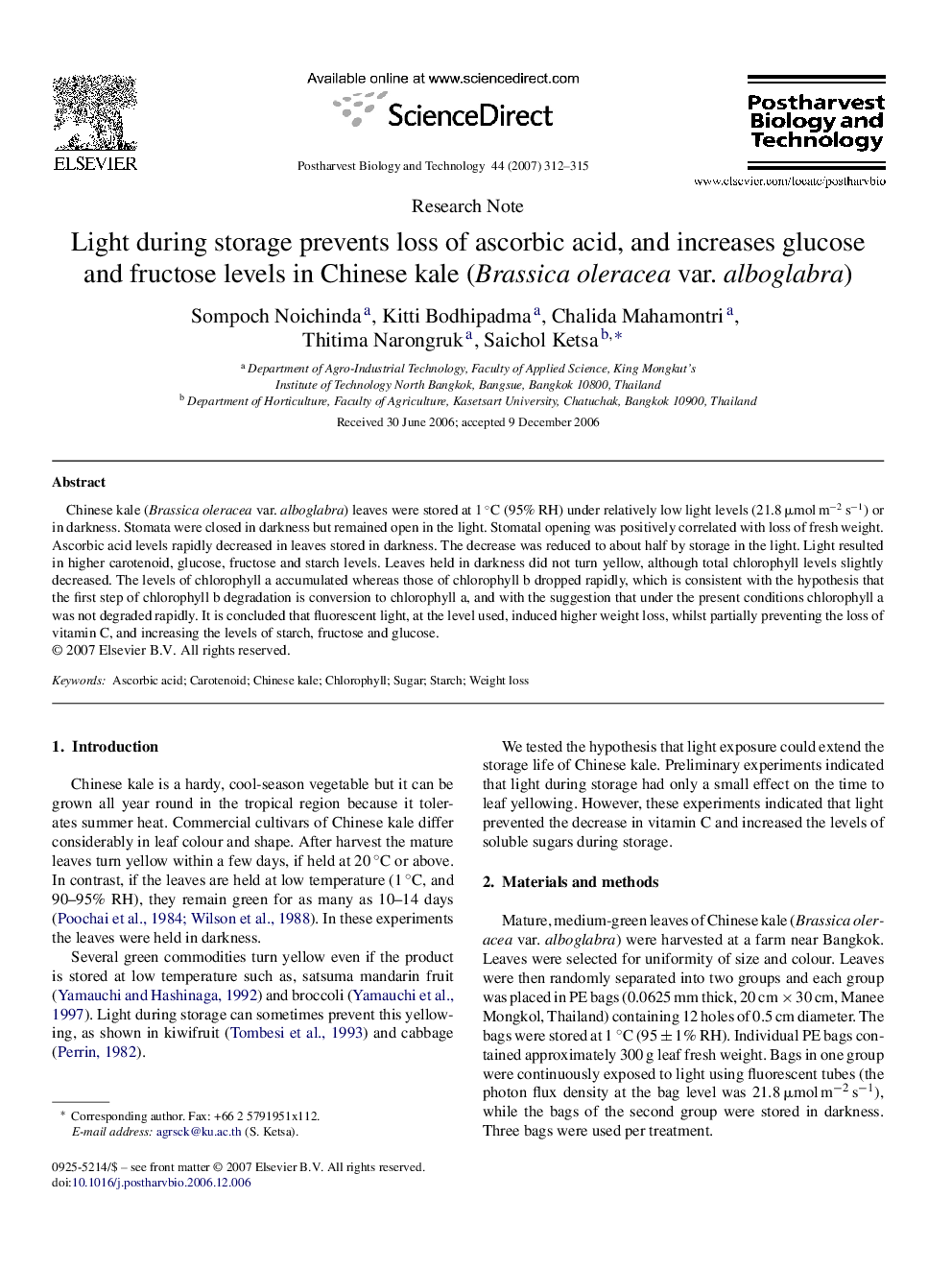| Article ID | Journal | Published Year | Pages | File Type |
|---|---|---|---|---|
| 4519649 | Postharvest Biology and Technology | 2007 | 4 Pages |
Chinese kale (Brassica oleracea var. alboglabra) leaves were stored at 1 °C (95% RH) under relatively low light levels (21.8 μmol m−2 s−1) or in darkness. Stomata were closed in darkness but remained open in the light. Stomatal opening was positively correlated with loss of fresh weight. Ascorbic acid levels rapidly decreased in leaves stored in darkness. The decrease was reduced to about half by storage in the light. Light resulted in higher carotenoid, glucose, fructose and starch levels. Leaves held in darkness did not turn yellow, although total chlorophyll levels slightly decreased. The levels of chlorophyll a accumulated whereas those of chlorophyll b dropped rapidly, which is consistent with the hypothesis that the first step of chlorophyll b degradation is conversion to chlorophyll a, and with the suggestion that under the present conditions chlorophyll a was not degraded rapidly. It is concluded that fluorescent light, at the level used, induced higher weight loss, whilst partially preventing the loss of vitamin C, and increasing the levels of starch, fructose and glucose.
